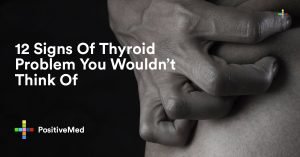
Sleep Disorders, Exercise and Obesity: The Path to Sweet Dreams
By PositiveMed-team Costa Rica office
Edited By: Stephanie Dawson
Introduction and prevalence of sleep disorders
Sleep disorders are very common. The International Classification of Sleep Disorders identifies at least 80 different sleep disorders (SD) into eight categories including insomnia, sleep disorder breathing, and sleep-movement disorders which are the most common. They affect 10%-13% of the population, 25%-35% of adults suffer from occasional insomnia. Sleep apnea is very common in adults with estimated rate of prevalence between 2% and 4% of adult population. The effects of these sleep disorders affect quality of sleep, energy, and vitality during daytime activities. There is a correlation between body mass index and sleep disorders.
Exercise and sleep disorders
Exercise is a protective factor in avoiding sleep disorders and helps to cure it. Evidence from studies suggest that moderate-intensity aerobic exercise approximately 3 hours prior to bedtime has been shown to reduce total wake time, pre-sleep anxiety, and sleep onset latency in people diagnosed with insomnia. In other studies a 16-week exercise program showed to improve sleep quality, duration, and ease of onset.
Excess weight and insomnia
Previous studies have found that people who suffer from obesity are more likely to report insomnia or difficulties with sleep, including a tendency to develop chronic insomnia. The mechanism is unknown, insomnia leads people to overconsumption of energy, which can lead to weight gain. Chronically shortened sleep duration can lead to overconsumption of food and alcohol. Cortisol is a hormone released in the bloodstream in high quantities in people that are under stressful conditions and causes the body to hold onto excess weight, and even gain more.

Excess weight and obstructive sleep apnea
Obesity is not a cause of obstructive sleep apnea, it is a risk factor for developing this medical condition. The relationship between obstructive sleep apnea is very high, around 70% of the population is considered clinically obese. Obesity can affect control of the upper airway through several mechanisms and alterations in the airway structure. From the neuromuscular point of view it is implied that it negatively impacts the breathing process. Obstructive sleep apnea changes energy expenditure during sleep and wakefulness, creating preferences for energy dense foods and high caloric intake while it alters hormonal changes related to appetite, satiety, and changes in sleep duration.
Exercise and obstructive sleep apnea
These conditions can create daytime sleepiness and lack of physical vigor, obesity is present in many patients affected with this disorder. Weight loss has been shown to reduce the symptoms of sleep apnea. Weight loss secondary to exercise seems to improve sleep apnea, while exercise alone has also been shown to improve this condition. Higher vitality, quality sleep, and increased vigor seem to be the principal benefits of exercise.
Restless Legs Syndrome and obesity
Restless Legs Syndrome (RLS) is an urge to move the legs while at rest. The urge to move the legs is alleviated only by movement of the legs, if not this may be uncomfortable. This can affect day time activities and decrease total sleep time. Dopaminergic disorder seems to be related to this syndrome as well as iron deficiency. Higher body-mass index correlates to frequency of RLS.
Restless Legs Syndrome and exercise
As in the disorders mentioned above, it seems that exercise eases symptoms of restless legs syndrome and obesity. In several studies symptoms are shown to be decreased while overall satisfaction and sleep quality improved in a significant way.
Conclusion
There is a positive influence of exercise on sleep disorders, however this influence has not been extensively researched. We don’t know which type of exercise is more efficient (aerobic vs. anaerobic), although adopting a physically active lifestyle may be key in natural treatment of sleep disorders and for weight loss. Aim for at least 30 minutes of physical activity three to four times a week.
Sources.
Punjabi NM, Shahar E, Redline S, Gottlieb DJ, Givelber R, Resnick HE.Sleep-disordered breathing, glucose intolerance, and insulin resistance: the Sleep Heart Health Study. Am J Epidemiol. 2004;160:521–530
.
Patel SR, Blackwell T, Redline S, et al. (2000) The association between sleep duration and obesity in older adults. Int J Obes (Lond) ;32: 1825–1834





